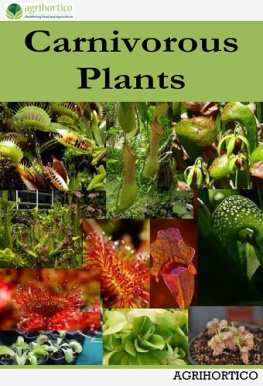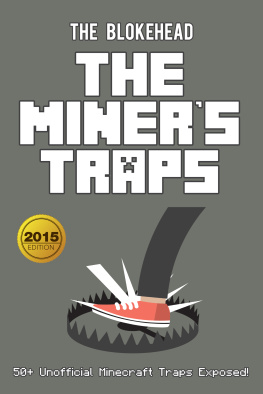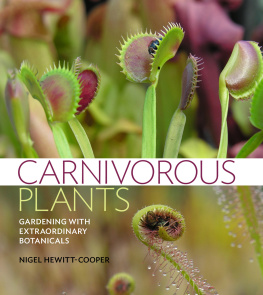THE HUNT
Carnivorous Plants
By Thomas And Joshua Ferriere
Copyright 2014 by Thomas Ferriere- All rights reserved.
Content
...........................................................................................................................
..................................................................................
.........................................................................................................................
..................................................................................
...............................................................................................................
........................................................................................................
............................................................................................................................
.......................................................................................................................

I want to thank you and congratulate you for downloading the book, The Hunt.
My son Joshua is 7 years old and he has a passion for meat eater plants, together we decided to publish a small book to share his passion.
Carnivorous plants are plants that are able to capture and digest small prey (insects, basically, but also other small animals too) for food.
All plants need three substances to survive: nitrogen, phosphorus, and potassium. They usually find it in the soil, through their roots.
But some soils have almost no nitrogen. To survive in such a habitat, the plants have to find other ways to get the nitrogen.
The insect's body is made up of proteins that contain a lot of nitrogen. To survive, these carnivorous plants have found amazing ways to catch the animals and eat them to get their nutrients.
Plants are unable to hunt animals and catch them. Instead, they have to lure them and trap them.
Carnivorous plants are generally easy to distinguish because they have very strange shapes. They have modified leaves that are able to catch small insects. The really cool thing about carnivorous plants is the variety of ways they use to trap their prey. Some of these tricks are very complex. There are two basic types of traps: the passive traps and the active traps.
Thanks again for downloading this book, I hope you enjoy it!
Joshua and Thomas
PITCHER AND PITFALL PLANTS

I mage 1
The leaves of these plants have evolved into slippery tubes that insects fall into. This plant is totally passive and does not perform any movement.
The trap consists of a leaf with a tube shaped like a cone. The edge is lined with glands that produce a substance that attracts the insects. This substance intoxicates the insects if they come to taste it. The drunk insect then falls down inside the trap. At that point, it's impossible to leave, since the edges are covered with hairs pointed downward that allow for only a one-way trip. The prey, because of its movements, quickly finds itself slipping to the bottom of the trap. There, it will be digested with the help of a fluid, which contains bacteria and digestive enzymes that will dissolve the insect's remains.
SNAP TRAPS

I mage 2
This trap is formed by the two lobes of the leaf, which close in a very quick movement. This one is an "active" trap. It is one of the most amazing plants on earth.
Sensory hairs located inside the leaf trigger the closure of the leaf. Once a prey touches a hair, a mechanism is triggered, but the trap will not close yet. It will require a second contact in a relatively short period of time. It does it like this so the plant avoids wasted effort, for example, if a small branch falls into the leaf.
If the prey is not edible, then the plant will reopen, otherwise it will be sealed and become a small belly.
The trap is then reopened after a few days, leaving only the skeleton of the insect.

Image 3
p.s.: Each leaf trap can only make a few catches in its life (usually 3). This is why you should avoid artificially triggering the mechanism.
BLADDER AND SUCTION TRAPS
These plants live in the water and use tiny bladders to ensnare their dinner.

I mage 4 Utricularia Aurea

I mage 5:
As soon as the prey hits the hairs near the bladder, it triggers something incredible. A trap door opens very fast at the edge of the bladder, and water is pulled into the bladder. The tiny prey is taken with the water and forced into the bladder. Enzymes are then produced and the victim is digested
FLYPAPER TRAPS

I mage 6 Drosera Capensis
All the leaves of this type of plant are covered with tiny droplets of glue. Once the insect is "glued," the leaf will wrap very slowly and tightly around the prey to increase the contact surface and improve digestion.

Image 6 bis

I mage 7 Pinguicula
The Pinguicula has glue on the upper and undersides of the leaves. The leaves have hairs on them (trichomes), which secrete a small pearl of glue that traps prey

I mage 8
LOBSTER-POT TRAPS

Next page



























